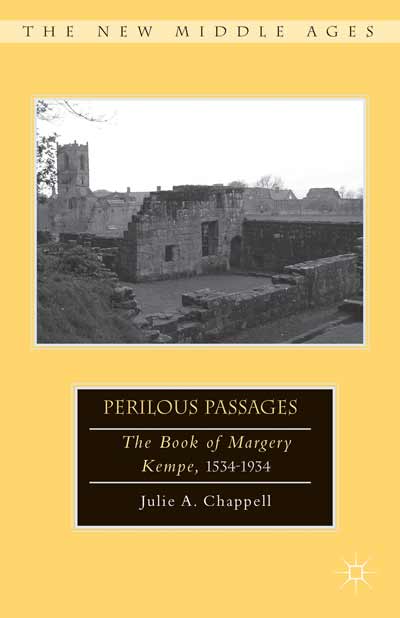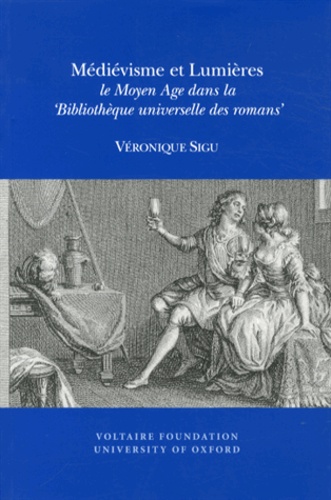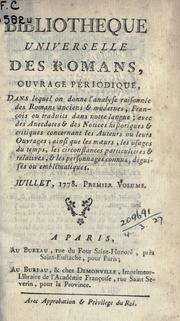Reviewed by Candace Robb (eccr14 at gmail dot com)
The one required course in my graduate program was
Introduction to Graduate Research, designed to inspire and intimidate. The texts
were the MLA Stylesheet, A Chicago Manual of Style, a pamphlet on
the graduate research paper, and The
Scholar Adventurers: enduring account of literature’s most famous research
puzzles by Richard D. Altick.[1]
We were to read Altick before the first class. A brilliant strategy: with
chapter headings such as "The Secret of the Ebony Cabinet" and "Exit a Lady,
Enter Another," Altick presented literary research as detective work.
Julie Chappell’s Perilous
Passages: The Book of Margery Kempe, 1534-1934, brought back that sense of
adventure for me, and it is no accident: as Altick echoed detective novels in
his chapter titles, Chappell references the game of Clue (Cluedo) in her
prologue: "Was it the Colonel in the Library with the candlestick? Or the
Colonel in the ping pong cupboard with a box of matches? Like any good English
mystery, this one began with a body purportedly found in the library of an
English manor house belonging to a member of a gentry family of some antiquity" (xliii). The contradicting versions of the early twentieth-century discovery of
a manuscript of The Book are fairly accurately
described in those Clue-like questions. She carries this atmosphere of mystery
and surprise through the book. I came away with a sense of wonder that such a
manuscript, an affective account of a woman’s spiritual journey, survived the violent
destruction of all that was deemed “popish” in the centuries after the
manuscript’s completion. How it did is quite a story.
As Chappell explains in her "Proym," she did not start out
to trace the journey of the manuscript. She was frustrated by the editors’
choices of extracts from Margery’s Book
in The Norton Anthology of English
Literature (1986 edition). Taken out of context, the excerpts "created a
most extraordinary late medieval woman…for whom [the students in her survey
class] could largely feel neither empathy nor sympathy" (xx). Wanting to provide
such context, she reread the book in Middle English as well as reviewing
current research on women’s spirituality in the late Middle Ages. Chappell’s
proym chronicling her journey into Margery’s Book and its context is itself a brief, clear review of the
literature. She came to see Margery and other pious laywomen as seeking "an
authority with which to sanction their spiritual (and, by association, their
earthly) lives [which] led [them]… to erase themselves through visionary
experience, to become human palimpsests, spiritual beings written over the
erasure of the earthly ones. Their authority, their voice would be understood
to come from the highest auctor, God" (xxii). This was particularly important as Archbishop Arundel’s 1409
Constitutions made clear his abhorrence of women offering spiritual advice of
any kind as it warned that vernacular versions of the Bible might permit "any
old woman to usurp the office of teacher” and “dare to instruct men" (xxix).
But her study took an
unexpected turn when "a scribal ‘correction,’ the crossing out of ‘Pope’; in
[a] litany of souls for which Kempe begged mercy" led Chappell to the British
Library to see the manuscript of the book. "The manuscript of The Book of Margery Kempe was glossed
and edited by rubricating hands from first leaf to last. Margery Kempe’s as yet
unnamed sixteenth-century rubricators/editors made additions, deletions,
glosses, symbolic drawings, and other enhancements…" (10). Chappell’s curiosity
about the rubricators shifted her focus from Kempe’s life to the story of the
manuscript itself. Beyond the two bookplates in the manuscript identifying the
owner as Henry Bowden, born in 1754, and an earlier inscription on the verso
side of the binding leaf facing fol. 1r identifying it as in the possession of
the Carthusians of Mount Grace Priory in Yorkshire, we knew nothing of the
whereabouts of this manuscript until Butler-Bowden brought it to the Victoria
and Albert Museum in 1934.
Chappell finds that two separate individuals altered the
manuscript—one working in the late fifteenth century, the other, the one
who made "the last hurried marginal glosses and corrections," including the
striking of the word "Pope," working slightly later, during the upheaval of Henry
VIII’s religious reform. Comparing the hands with other manuscripts, Chappell identifies
the two Carthusian scribes, and proposes the path by which the manuscript came
to reside at Mount Grace. The later rubricator added a note to one of his
marginal additions citing Richard Methley, a Carthusian mystic, as his source,
a former vicar of Mount Grace whose work was similar to the books Margery Kempe
claims to have "heard." His being referred to in the past tense provided
Chappell with a date after Methley’s death for the first sixteenth-century
rubricator of The Book (23).
To have come to reside at Mount Grace was key to the
survival of Margery’s Book, as the
Carthusian order held the copying and sharing of spiritual books in high
regard, and Methley in particular translated into Middle English Marguerite
Porete’s Mirror of Simple Souls,
similar in its affective piety to Margery’s work.
Mount Grace itself was one of the last religious houses to
be dissolved by Henry VIII, on December 19, 1539 (xxxviii). Discovering that Margery’s
Book is not among the manuscripts
listed as in the possession of Mount Grace at the time of its dissolution,
Chappell searches for and finds a likely avenue of transmission, one that would
bring the manuscript to the London Charterhouse. She includes a gut-wrenching
account of the fate of the prominent members of the London Carthusian community,
to emphasize in what reverence a member of the order, Everard Digby, held
Margery’s Book, that he risked the
fate of his less fortunate fellows to spirit the manuscript to the safety of a Popish recusant family.
In the chapter "Digbys, Erdeswicks, Bowdons, and Butler-Bowdons," Chappell outlines the genealogical path by which the manuscript was passed down
through the centuries by Catholic recusants, documenting the marriages that led
from Everard Digby in 1538, to the late eighteenth century Henry Bowden who
pasted his bookplates in the manuscript, to Col. William Butler-Bowdon who discovered
it tucked into a ping pong cabinet beside a fireplace in 1934.
From there the manuscript moved to the Victoria and Albert Museum,
where it was placed into the competent
hands of the scholar Hope Emily Allen, who had the background to recognize what
it was, "an incomparable record of ‘medieval pilgrim-routes [and] medieval
social history [which] brings to life not only famous persons of the early
fifteenth century, but also humble ones, at home and abroad’" (69). What I
expected to be a triumphant end to the tale becomes the most ignoble part of The Book’s passage, a too-familiar
battle in which an inexperienced but ambitious younger scholar (Sanford Brown
Meech) chafes at the slow deliberation of his more experienced co-editor
(Allen) and plays himself up to the Colonel, who is eager to gain credit for
his family’s heroic preservation of such a find and easily joins in Meech’s impatience
with Allen. In the end, Allen is pushed to the sidelines. It is an infuriating
episode, but what good detective story has a happily ever after ending?
Dr. Julie Chappell, Professor of English at Tarleton State
University, has published scholarly texts, creative non-fiction, and poetry, and it
is her ease in all three styles that makes Perilous
Passages a pleasure to read. While thoroughly documenting each step of her
research, she pays attention to pace and pauses for emphasis, summing up the
pertinent details, inserting anecdotes about the more colorful characters whose
lives were touched, sometimes unknowingly, by Margery Kempe’s Book.
That a manuscript of The
Book of Margery Kempe survived now seems just short of a miracle to me. I
wonder what other marvels of medieval piety we have lost, or what gems still lie
hidden behind paneling or tucked beneath the false bottom of a cupboard in some
ancient pile, waiting to be discovered.
Candace Robb
Independent scholar; author of the Owen Archer Mystery novels and, writing as Emma Campion, The King's Mistress and the forthcoming A Triple Knot.



